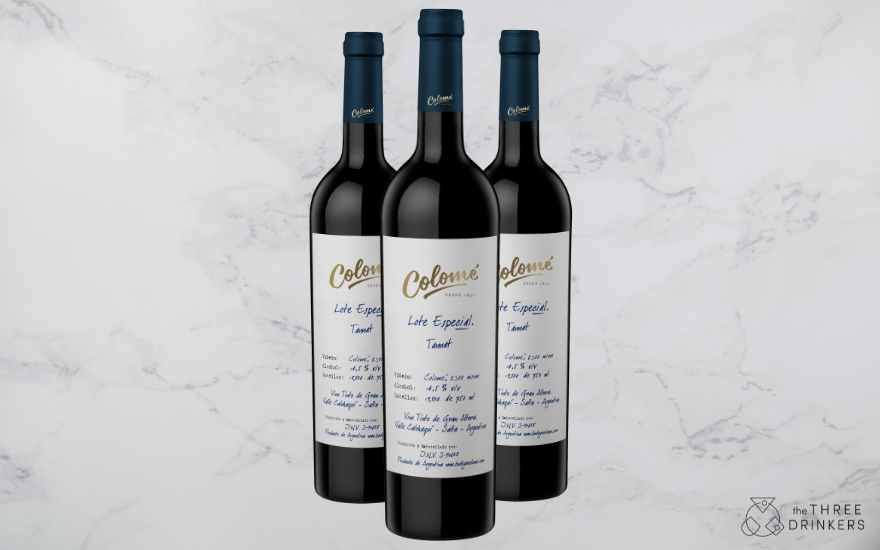Too many people are sleeping on Tannat wine, and we’re on a mission to change that! Don’t worry! Tannat grapes are (literally) thick-skinned and can handle being overlooked, because those that do venture into their world will be greeted with bombastically bold, deep reds ranging right through to surprisingly subtle offerings from this dynamic grape variety. Tannat wine has close to the highest antioxidant count of all red wines which, in our opinion, makes it about as healthy as a wine can be. Don’t know where to start? Take the plunge with these eight amazing Tannat wines:
Garzón Tannat 2021
Just off the Atlantic coast of Uruguay you’ll find the vineyards of Bodega Garzon. Uruguay is a powerhouse in the Tannat wine world, being their national grape and source of great pride - Garzon Tannat 2021 is a phenomenal example of the nation’s finest wine, resting in French oak barrels for a whole year to produce a full bodied wine full of spiced berry and chocolate notes on the palate. This fantastic example is a great Tannat wine to start your journey with, if you’ve never tried one before.
Size: 750ml
ABV: 14%
Country: Uruguay
Find here: £21.95
Colomé `Lote Especial` Tannat 2021
This award winning Argentinian wine is literally full of surprises, and requires proper aeration to unlock its full aromatic potential - this isn’t uncommon of Tannat wines, but this wine shines with just how much can be woken in terms of fruit, spice and a luscious mouth feel to boot. With its pitch black colour and decadent palate, this wine is also certified vegan! A fantastic option for those looking for a high quality Tannat wine without completely breaking the bank.
Size: 750ml
ABV: 14.5%
Country: Argentina
Find here: £22.50
Domaine Berthoumieu Madiran - “Cuvee Charles de Batz” 2017
As dense in tannins as it is rich forest fruits and raisins, this Tannat wine offering is perfect for lovers of intense, rich purple wines. The nose provides oak notes from the barrel that linger right through to the finish. Looking for a perfect wine for steak night? Look no further than this exceptional bottle. Tannat wines thrive in their village estate in Viella, where wines are known for their incredible character. Cuvee Charles De Batz is a tremendous example among an already fantastic output.
Size: 750ml
ABV: 14%
Country: France
Find here: £23.20
Jeandauge Pistache Rouge
Some wines just scream date night and Jeandauge Pistache Rouge is one of those wines! Everything from the beautiful, romantic modern labelling down to the fruity, liquorice notes. This wine is here for a good time! Boasting all the complexities one can expect from the exceptional wines of South West France - this is a wine to impress, but doesn’t skimp on the flavours and dares to be fun! This wine ages for a year in a barrel, and then an extra ten months in concrete - like all good things, a labour of love and patience.
Size: 750ml
ABV: 14.3%
Country: France
Find here: £27.45
Bodegas Garzón Single Vineyard 2020 Bottle
The Garzon region of Uruguay is known for its unique terrain that provides almost the perfect conditions with which to grow Tannat grapes, so it is no surprise that many exceptional wines are produced in this region! This single vineyard bottle is brimming with fruit and spices on the nose, and all the rich tannins you’ve come to expect from the best Tannat wines on the palate. This is wine for a special occasion, for sure, but also a wine that the drinking of is, in and of itself, a special occasion.
Size: 750ml
ABV: 14.5%
Country: Uruguay
Find here: £33.75
Folklore Tinto 2022
A Tannat wine that has been “kissed” with Petit Manseng grapes, creating a unique flavour profile and process of creation. Tannat is a powerful grape with rich flavour, and many distillers look to add complexity to their wines through co-pigmentation. This all sounds scary, but it can be broken down into this wine is super delicious. Attention to detail in the hand picked grapes makes this wine standout with notes of sour cherry and plum, lemon zest and herbs.
Size: 750ml
ABV: 13%
Country: Uruguay
Find here: £16.50
Madiran Grevieres 2017 (Blend)
Proof that wine doesn’t have to break the bank in order to be delightfully high quality! Tannat is a versatile grape, and the already infinite combinations of flavours are only expanded when we delve into the world of Tannat dominated blends. This is the case of Madiran Grevieres 2017, which is a primarily Tannat wine, blended with Cabernet Sauvignon to give this wine a plump, juicy finish and plenty of spice on the palate. The region of Madiran has a unique terrain that uniquely suits it to produce excellent Tannat wines. If that wasn’t enough, it’s aged for 12 months in new and old oak barrels! A true labour of love and one not to be missed.
Size: 750ml
ABV: 14%
Country: France
Find here: £15.49
Château de Sabazan 2018 (Blend)
Straight in the heart of the mediaeval village of Sabazan, thousands of winegrowers subscribe to a means of production centred on respect for the terroir and their peers. The vineyard producing this wine sits around a 15th century building, and the unique soil grows an abundance of big bold Tannat grapes with which to produce their world-class wines. This elegant offering is rich, warming and full bodied with a deep structure of tannins. Another fantastic budget example - what are you waiting for?
Size: 750ml
ABV: 14%
Country: France
Find here: £16.50
The spirits and wines produced by grapes are endless and ongoing, want to learn about something different? How about Pisco? The national spirit of Peru and Chile, boasting a wide berth of grape varietals.
By Miley Kendrick












































